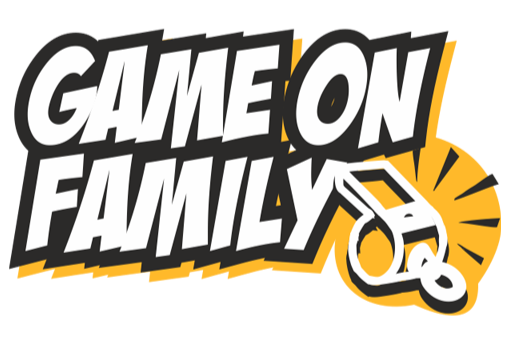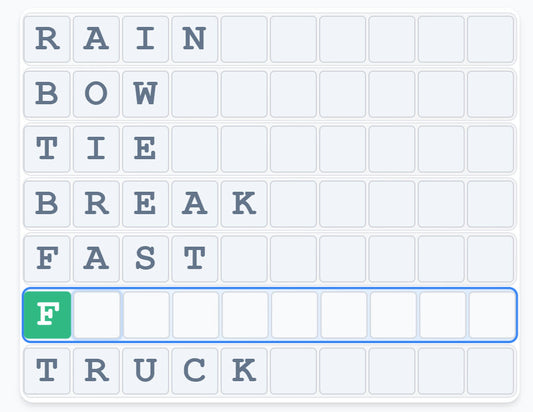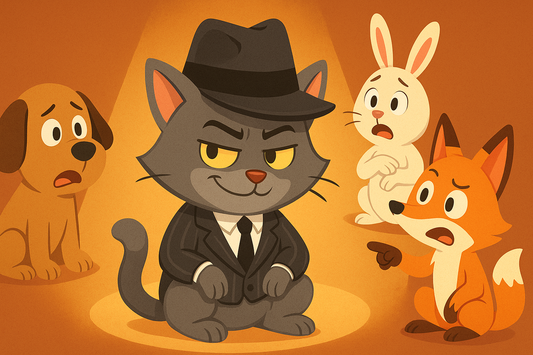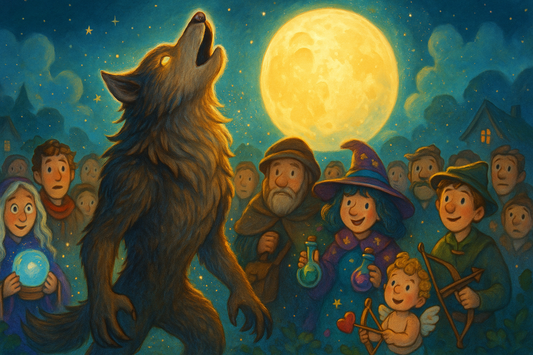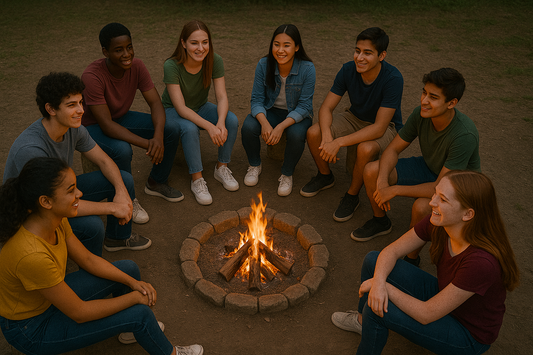
How to Play Mad Libs: Rules, Tips, and Hilarious Variations
Share
Mad Libs is a fill-in-the-blank word game that turns an ordinary story into something completely ridiculous. One player prompts others for specific types of words — nouns, verbs, adjectives — without revealing the story. When all the blanks are filled, the story is read aloud… often with laugh-out-loud results.
I grew up playing Mad Libs with friends and family on long car trips. I remember the anticipation while waiting to hear the final story, knowing my silly word choices were going to send everyone into fits of laughter. Now I play it with my kids, and it’s just as fun. They’re right in that sweet spot where they find everything hilarious — and I have the parent advantage of knowing exactly which words will make them laugh before we even read the story. I’ve even developed a “parent cheat list” of suggested words (shared below) that can guarantee giggles every time.
Objective
Fill in the blanks of a pre-written story with words of specific types to create a funny (and often nonsensical) story.
Number of Players
2 or more players.
Age
Ages 8+ for playing without help. Younger kids can join with assistance.
Game Length
5–15 minutes per round.
Skills Learned
- Parts of Speech – Practice identifying nouns, verbs, adjectives, etc.
- Creativity – Thinking of funny or unexpected words.
- Listening & Recall – Remembering the story flow while hearing it read aloud.
- Group Bonding – Shared laughter makes this a great icebreaker.
Why We Like It for Families and Kids
Mad Libs is quick, portable, and endlessly replayable. It’s a stealthy way to teach grammar and vocabulary while keeping kids laughing. Plus, the creativity makes each story a little time capsule of your group’s sense of humor at that moment.
As a parent, I also love my “role” in steering the game toward big laughs. If I’m the one giving words, I’ll sneak in some favorites I know will crack my kids up. And when they’re the ones giving words, I might give them a gentle nudge toward something silly. It’s one of the easiest ways to create shared memories that we’ll be laughing about for years.
What You Need
- A Mad Libs book or printable story template — or any generic “fill-in-the-blank” story set.
- Official Mad Libs: Original Mad Libs
- Generic Alternatives: Funny Fill-in-the-Blank Stories
- A pen or pencil.
- (Optional) Free Printable Fill-in-the-Blank Stories — grab some to start playing right away.
Setup
- Choose who will be the reader (the person holding the story) for the round.
- The reader should keep the story hidden from the other players.
How to Play Mad Libs — Step by Step
1: Grab a friend or group and a Mad Libs story
Use an official Mad Libs book, a generic alternative, or one of our free printable templates.
2: Choose a reader for the round
The reader will manage the story and prompt the others for words.
3: The reader prompts for words
Without showing the story, the reader asks the other player(s) for words by type — for example, “Give me an adjective” or “Name a plural noun.”
4: Fill in the blanks
As each word is given, the reader writes it in the correct blank in the story.
5: Keep the story secret
Players shouldn’t know the context until all blanks are filled — that’s where the surprise comes from.
6: Read the story aloud
Once all blanks are filled, the reader reads the story in full, inserting the chosen words.
7: Switch roles for the next round
A new reader takes over and the fun starts again.
Rules (Summary)
- The reader may not reveal the story until it’s complete.
- All words must match the requested part of speech.
- Any appropriate word is allowed — the funnier, the better.
- Rounds continue until all players have had a turn as reader (optional).
Parent Cheat: Funny Word Ideas for Kids
Kids will often default to potty humor — and honestly, a little of it is funny and worth keeping in. But if they keep going back to the same few words every time, it gets repetitive and loses its punch. The trick is to mix in other creative, unexpected words that still make them laugh while also expanding their vocabulary and sense of humor.
Adjectives: slimy, stinky, glittery, gigantic, tiny, soggy
Verbs: explode, wiggle, trip, sneeze, slurp
Nouns: llama, underpants, pickle, dinosaur, meatball, bellybutton lint
Body Parts: bellybutton, pinky toe, nostril, armpit, earwax
Mild Potty Humor (Use Sparingly for Best Effect):
poop, fart, stinky feet, burp, toilet, underwear
Variations to Try
- Themed Stories – Use stories tied to a holiday, trip, or event.
- Speed Round – Limit players to 5 seconds to answer each prompt.
- Group Consensus – Players agree together on each word instead of answering individually.
- Drawing Version – Players draw the prompt instead of giving a word.
Tips for Making the Funniest Story
- Go Unexpected – The more random the word, the funnier it usually is.
- Lean into Inside Jokes – Use references only your group understands.
- Use Action Words – Strong verbs make stories more dynamic.
- Mix the Silly and the Straight – Too many goofy words can overwhelm the humor; mix in some normal ones for contrast.
- Know Your Audience – If you’re playing with kids, load your answers with words you know will get a laugh.
FAQs
Rules FAQs
Do you have to follow the exact part of speech requested?
Yes — but you can get creative within that category.
Can the reader play too?
The reader participates by hearing the story come together and laughing along.
Can you reuse words?
Yes, but variety usually makes the story funnier.
History FAQs
When was Mad Libs invented?
Mad Libs was created in 1953 by Leonard Stern and Roger Price and first published in 1958.
Why is it called “Mad Libs”?
The creators chose the name from a conversation about needing a new adjective (“mad”) and noun (“libs” for ad-libs).
